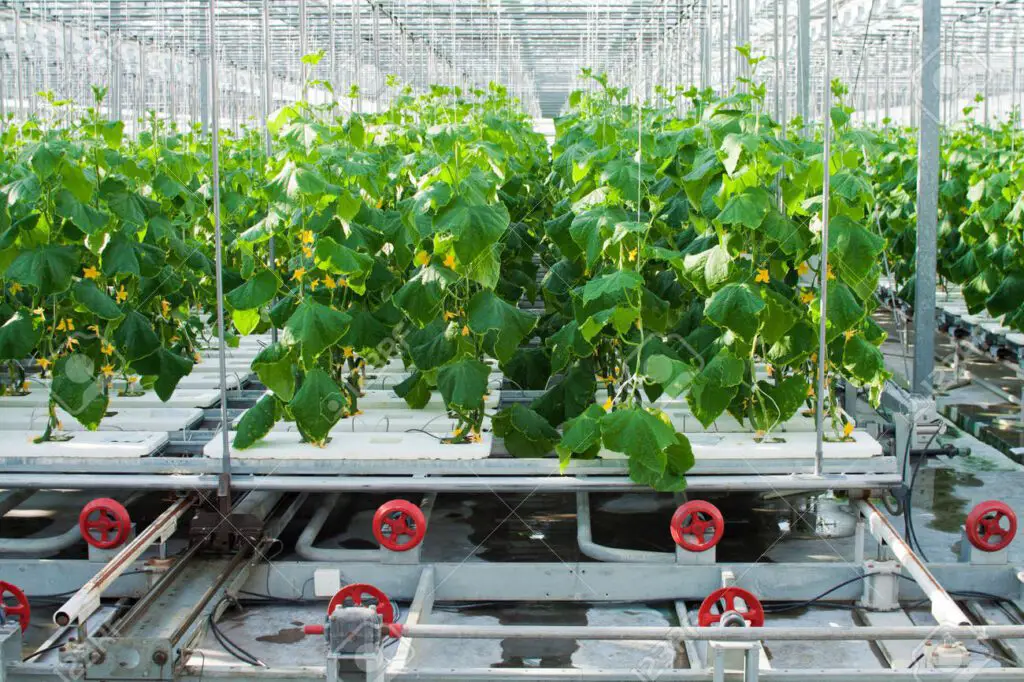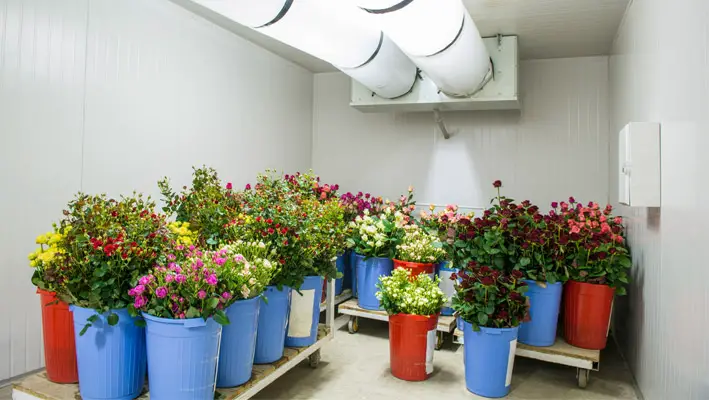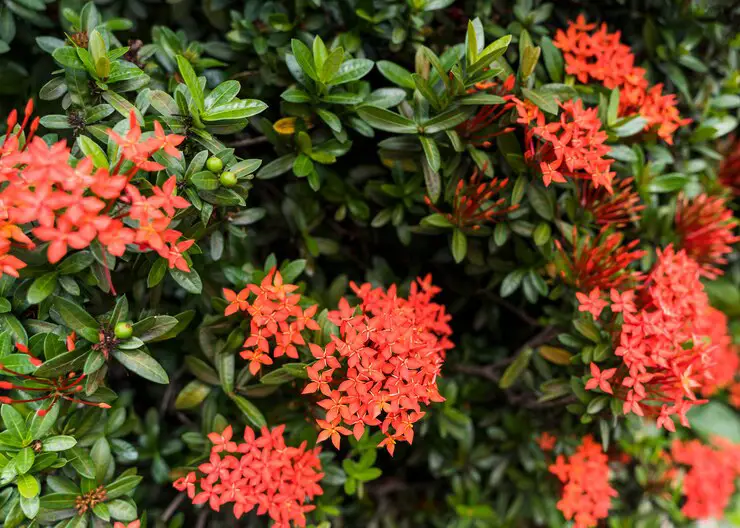Hydroponic cucumber cultivation, Ways to maximize yield
Table of Contents

Properly Cleaning and Storing Hydroponic Cucumbers for Extended Shelf Life
Properly cleaning and storing hydroponic cucumbers is crucial for maintaining their freshness and extending their shelf life. By following these simple steps, you can ensure that your cucumbers stay crisp, flavorful, and market-ready for longer periods.
Firstly, it is important to remove any dirt, debris, or residue from the cucumbers. Begin by rinsing them thoroughly with clean water to eliminate any surface contaminants. Gently scrub the cucumbers with a soft brush or sponge to remove any stubborn dirt. Avoid using harsh chemicals or detergents as they can leave a residue that may affect the taste and quality of the cucumbers.
Next, carefully dry the cucumbers after washing. Excess moisture can lead to spoilage, so it is important to remove as much water as possible. Pat the cucumbers dry with a clean towel or use a salad spinner to remove excess water. Proper drying will help prevent bacterial growth and keep the cucumbers fresh for longer.
Once the cucumbers are clean and dry, it is time to store them properly. One effective method is to wrap each cucumber individually in a paper towel. This helps to absorb any remaining moisture, preventing the cucumbers from becoming soggy. Place the wrapped cucumbers in a sealed plastic bag or container and store them in the refrigerator. This will help to maintain the cucumbers’ freshness and extend their shelf life.
In conclusion, by following these steps for properly cleaning and storing hydroponic cucumbers, you can ensure that your produce remains crisp and delicious for an extended period. The key is to eliminate any dirt, moisture, or contaminants, and provide optimal storage conditions. By taking these measures, you can enjoy the benefits of home-grown cucumbers for longer while minimizing waste.
• Rinse the cucumbers thoroughly with clean water to remove any dirt and debris.
• Gently scrub the cucumbers with a soft brush or sponge to remove stubborn dirt.
• Avoid using harsh chemicals or detergents as they can affect the taste and quality of the cucumbers.
• Dry the cucumbers carefully after washing to prevent excess moisture.
• Pat them dry with a clean towel or use a salad spinner to remove excess water.
• Proper drying helps prevent bacterial growth and keeps the cucumbers fresh for longer.
• Wrap each cucumber individually in a paper towel to absorb any remaining moisture.
• This prevents the cucumbers from becoming soggy during storage.
• Place the wrapped cucumbers in a sealed plastic bag or container before storing in the refrigerator.
This maintains their freshness and extends their shelf life.
Maximizing Yields and Repeating Success in Hydroponic Cucumber Cultivation
Hydroponic cucumber cultivation offers a promising solution for gardeners seeking to maximize yields and replicate success year after year. With the right techniques and careful attention to detail, it is possible to achieve consistently high yields of healthy, flavorful cucumbers that are in high demand among consumers.

To ensure maximum yield and quality, it is crucial to provide optimal growing conditions for your hydroponic cucumbers. This includes maintaining the right balance of nutrients, managing pH levels, and controlling environmental factors such as temperature, humidity, and lighting. Implementing a well-designed nutrient management plan can significantly improve cucumber growth and yield, as proper nutrition is essential for the development of healthy plants. Additionally, monitoring and adjusting pH levels are crucial for nutrient uptake, as different nutrients are absorbed at different pH ranges. By consistently maintaining the right pH level, you can enhance nutrient absorption and support the overall health and productivity of your cucumber plants. Remember, attention to detail is key when it comes to maximizing yields and replicating success in hydroponic cucumber cultivation.
• Maintain optimal balance of nutrients
• Manage pH levels for proper nutrient uptake
• Control environmental factors such as temperature, humidity, and lighting
• Implement a well-designed nutrient management plan
• Monitor and adjust pH levels consistently
• Pay attention to detail
How can I clean hydroponic cucumbers for extended shelf life?
To properly clean hydroponic cucumbers, gently rinse them under running water to remove any dirt or debris. Avoid scrubbing the cucumbers vigorously as this can damage their skin. Pat them dry with a clean towel before storing.
Can I store hydroponic cucumbers in the refrigerator?
Yes, storing hydroponic cucumbers in the refrigerator can help extend their shelf life. Place them in a plastic bag or wrap them in a paper towel to prevent moisture loss. Avoid storing them near ethylene-producing fruits, as this can cause the cucumbers to ripen and spoil faster.
How long can hydroponic cucumbers be stored?
Hydroponic cucumbers can typically be stored for up to 1-2 weeks in the refrigerator. However, their shelf life may vary depending on their freshness at the time of purchase and how they are stored.
Can I freeze hydroponic cucumbers?
While it is possible to freeze hydroponic cucumbers, it is not recommended as they can become mushy and lose their crisp texture. It is best to consume them fresh or find other methods of preserving them, such as pickling or canning.
How can I maximize yields in hydroponic cucumber cultivation?
To maximize yields in hydroponic cucumber cultivation, ensure that the plants have access to proper lighting, temperature, and nutrient levels. Regularly monitor and adjust these factors to create an optimal growing environment. Additionally, pruning the plants and providing effective support structures can help increase yields.

Can hydroponic cucumber plants be reused for future cultivation?
Yes, hydroponic cucumber plants can be reused for future cultivation. After harvesting the cucumbers, carefully remove the old plants from the hydroponic system and clean the growing containers. It is important to properly sterilize the system and equipment before starting a new cultivation cycle to prevent the spread of diseases or pests.
For more information and clear understanding you can watch this video

Suyash Dhoot, editor at SouthElMonteHydroponics.com, is a pioneering force in hydroponics. His expertise spans nutrient solutions and cutting-edge technology. Through meticulous editing, he elevates the site to a beacon of knowledge, offering invaluable insights. Dhoot’s dedication shapes a greener, more efficient future for agriculture.







As soon as I noticed this website I went on reddit to share some of the love with them.